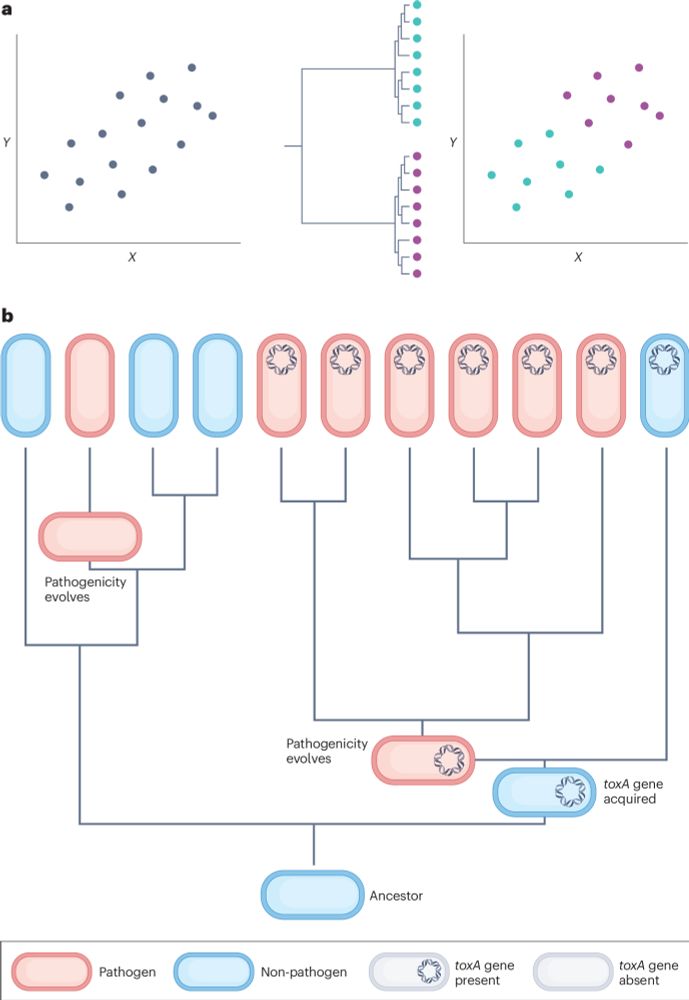

This complements our recent article on the secondary metabolism of xylarialean fungi (Franco et al., 2025 vol. 10, e00468-25). @ernestofranco.bsky.social

This complements our recent article on the secondary metabolism of xylarialean fungi (Franco et al., 2025 vol. 10, e00468-25). @ernestofranco.bsky.social
journals.asm.org/doi/10.1128/...

journals.asm.org/doi/10.1128/...
@you-wren.bsky.social @laurameredith.bsky.social
www.biorxiv.org/content/10.1...

@you-wren.bsky.social @laurameredith.bsky.social
www.biorxiv.org/content/10.1...
We show how phylogeny-based methods can resolve the problem of non-independence in genomic datasets.
These methods must be considered an essential part of the comparative genomics toolkit.
@lauriebelch.bsky.social @stuwest.bsky.social

We show how phylogeny-based methods can resolve the problem of non-independence in genomic datasets.
These methods must be considered an essential part of the comparative genomics toolkit.
@lauriebelch.bsky.social @stuwest.bsky.social
tinyurl.com/u32xdpx9

tinyurl.com/u32xdpx9

